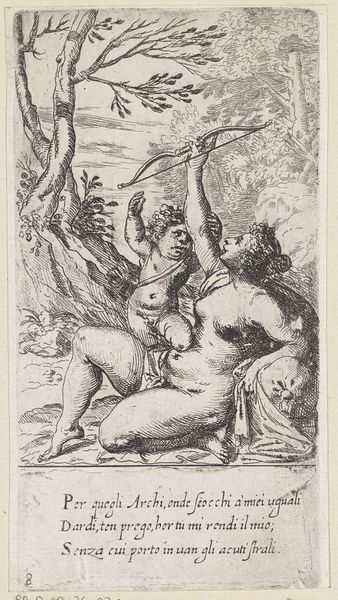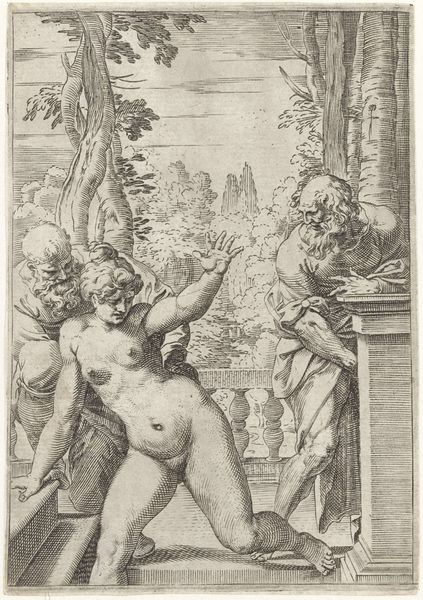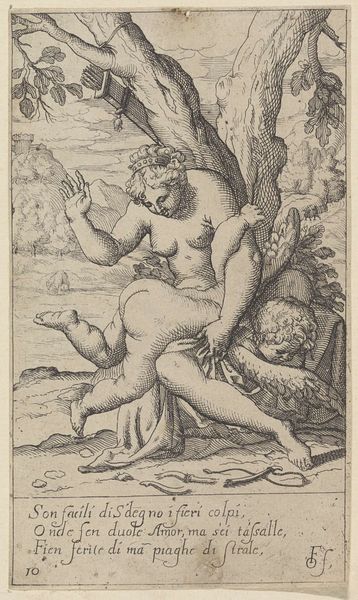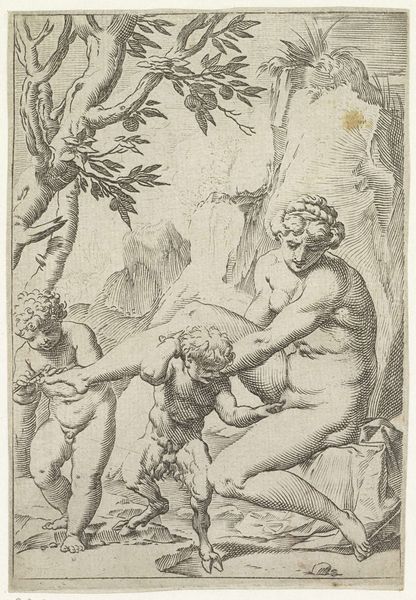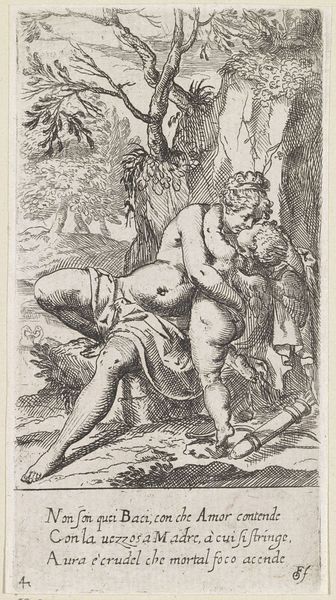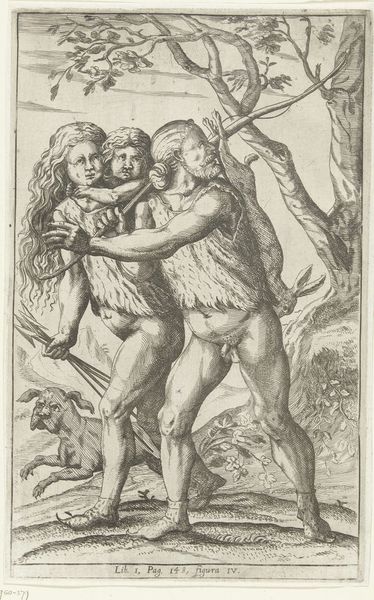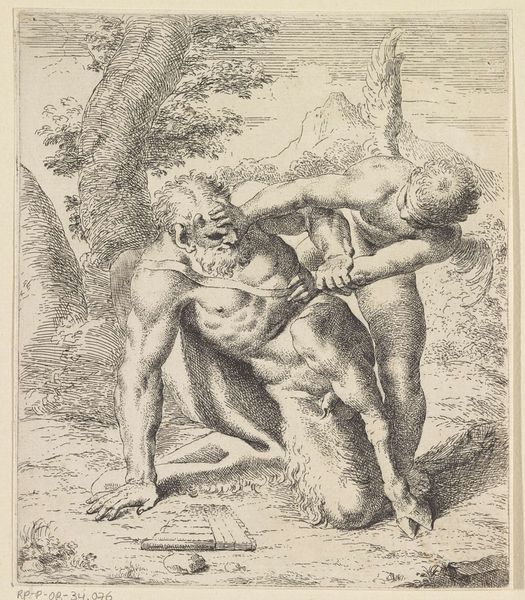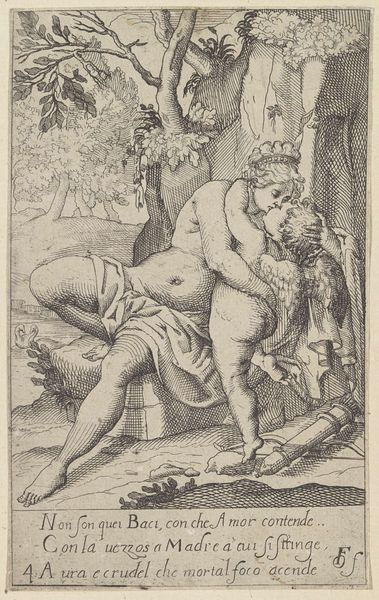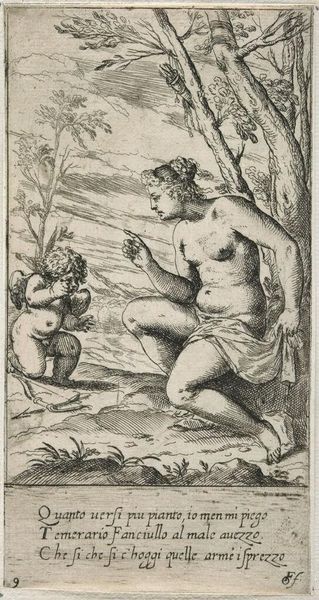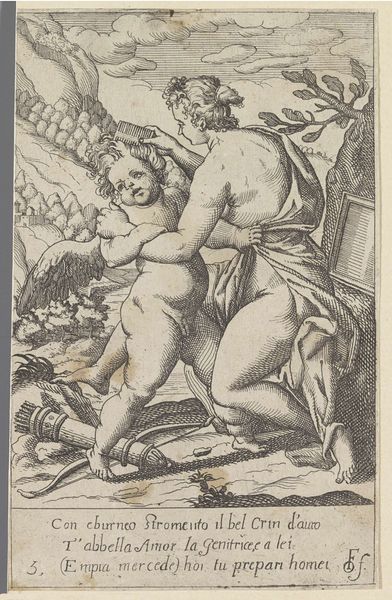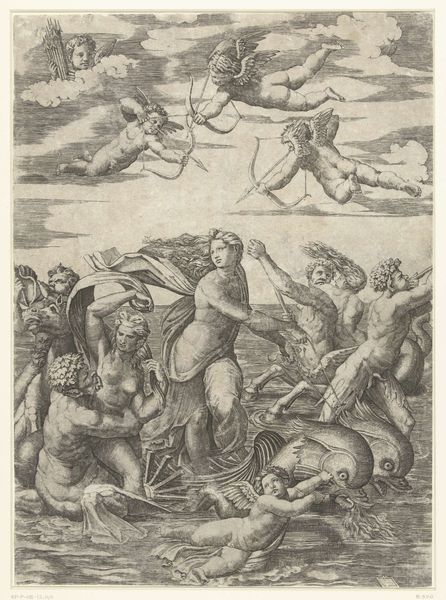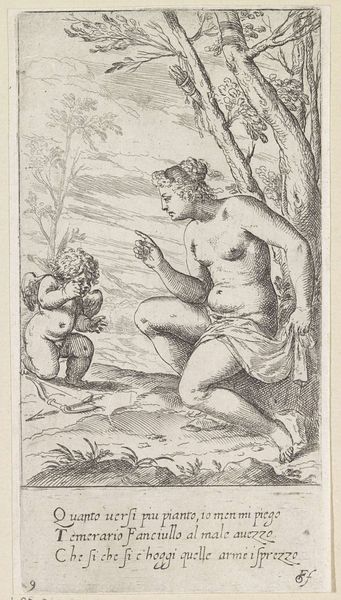
print, engraving
#
allegory
# print
#
classical-realism
#
mannerism
#
figuration
#
history-painting
#
nude
#
engraving
Dimensions: 15.3 x 11 cm
Copyright: Public domain
Curator: Agostino Carracci created this engraving, "Venus Punishing Profane Love", around 1595. Editor: My first impression? Ominous. There’s something stark and unforgiving about the light and shadow, highlighting the struggle of the figures. It is rather graphic! Curator: Absolutely. What we see is an allegory. Venus, goddess of love, is poised with a bundle of switches ready to punish the errant Cupids. One is blindfolded, another has fallen to his knees, lamenting the sting of love gone wrong, the other seems despondent. Editor: The composition is fascinating. Note the dominance of Venus, powerfully positioned. But observe the swirling diagonals created by the Cupids' bodies; it directs our eye through the entire scene. How do the lines of the engraving influence your understanding? Curator: The engraving process itself is critical here. The lines are not just aesthetic; they are the result of skilled labor and material choices that place the image within a larger system of printmaking. We must consider its availability to a wide audience due to its medium. The Mannerist style influences both form and production. Editor: Agreed. And these fine, deliberately placed lines really amplify the tension in the figures’ musculature, the weeping Cupid's distress—Carracci makes you feel their discomfort and resistance. Note too how the hatching and cross-hatching creates tonality. Curator: We might also think about who had access to this kind of allegory and how they might have read these symbols of profane versus divine love in their societal context. The materiality implies its purpose for dissemination and engagement in discourse. Editor: Well, for me, analyzing it visually highlights how Carracci's skill allows him to imbue a somewhat conventional moralizing scene with tangible energy and depth of feeling, using contrast as a metaphor for struggle itself. Curator: Understanding the means of production alongside these elements offers an understanding not only of art history, but of a chapter in the cultural and societal norms of that era. Editor: Seeing the artist's mastery, as rendered by the forms and the light, gives you a kind of felt sense for the experience of profane love being corrected in its day.
Comments
No comments
Be the first to comment and join the conversation on the ultimate creative platform.
